|
|
JAMES BOND FACT FILES |
|
|
JAMES BOND FACT FILES |
|
|||||
 |
|||||
|
On March 17, 1961 LIFE Magazine published an article about John F. Kennedy (1917-1963), in which the newly-elected American President listed his ten favourite books. Ian Fleming's FROM RUSSIA, WITH LOVE was number nine on the list and provided a much-needed boost to the sales of the James Bond novels in the USA. Ian Fleming had been introduced to then Senator Kennedy in March of 1960 by his friend Marion “Oatsie” Leiter (1919-2018). The author put forward his suggestions on how to ridicule Communist politician Fidel Castro (1926-2016), and put a stop to the anticipated Cuban revolution. Ian Fleming's fanciful ideas may have been no more than after-dinner jokes, but the pair kept up a friendship with the President receiving inscribed copies of the Bond novels.
Published in the UK on March 27, 1961, Ian Fleming's eighth full-length James Bond novel THUNDERBALL was greeted with very positive reviews and its initial print-run sold out very quickly. When published in New York by the Viking Press on April 24, 1961 the US edition did not feature the same Richard Chopping dust jacket artwork as the UK hardback. After commissioning Chopping to create the THUNDERBALL cover a year earlier, the original artwork became the property of Ian Fleming. Macmillan, who still held the US publishing rights to Fleming's first seven novels, requested that the artwork be used on their forthcoming anthology of three Bond novels entitled Gilt-Edged Bonds, due for publication in July of 1961. The artwork was sent to New York but unfortunately got damaged whilst in the possession of Macmillan and underwent restoration before being returned to Fleming. The US Viking Press hardback had a dust jacket designed by S.A. Summit Incorporated featuring an atmospheric illustration of the speeding Disco Volante hydrofoil at night, with its searchlight illuminating the water ahead. |
|||||
|
|||||
|
The US reviews for THUNDERBALL were equally positive, no doubt spurred on by the endorsement from the President, but Anthony Boucher in the New York Times once again recycled his stock comments about Fleming's writing, reluctantly praising the new novel which followed his review of a reprint of John Buchan's The 39 Steps:
THUNDERBALL sold much better than did its predecessors, and was reprinted twice more within three months of its original US release. A cheaper ‘Book of the Month Club’ edition followed shortly afterwards, and interest in all things James Bond finally began to gain momentum in the USA. On July 16, 1961 it was reported in the New York Times that Harry Saltzman & Albert R. Broccoli had bought the rights to seven of Ian Fleming's James Bond novels with the exception of CASINO ROYALE, and the recently published THUNDERBALL, which was by now the subject of an ongoing lawsuit between Kevin McClory and the author, and would not be resolved until December 1963. |
|||||
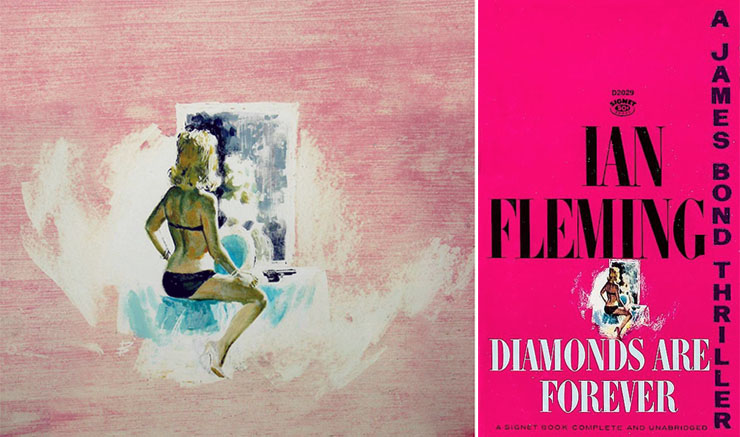 |
|||||
|
In November 1961 Signet published DIAMONDS ARE FOREVER, four years after the original edition from Perma Books. The new paperback was the first in a series of reprints with a uniform set of covers once again painted by Barye Phillips. This time the covers featured a small vignette set against a solid colour background, and with the words ‘A James Bond Thriller’ printed vertically down the right-hand side. The original artwork for the DIAMONDS ARE FOREVER cover was later presented to Ian Fleming, whose widow Ann in turn gave it to their former employees Mr. and Mrs. Beckett as a retirement gift in 1974. FROM RUSSIA, WITH LOVE was also published in November 1961, followed by DOCTOR NO in December. Signet then quickly issued CASINO ROYALE, LIVE AND LET DIE, GOLDFINGER, MOONRAKER and FOR YOUR EYES ONLY at monthly intervals in 1962. The new uniform covers now had ‘D’ series catalogue numbers denoting the higher 50c price point. |
|||||
|
|||||
|
With a uniform series of covers the James Bond Signet paperbacks now took their place on the newsstands, and in the pockets of millions of Americans in the early 1960s. With the rear cover listing the availability of the six other titles in the series, sales of the Signet paperbacks were now on the increase, and with the news that Dr. No was being filmed, James Bond's popularity in the USA began to rise. Although earlier Ian Fleming novels and short stories had been serialized in US men's magazines (which naturally limited their availability), THUNDERBALL was widely syndicated in several American newspapers prior to the hardback publication of THE SPY WHO LOVED ME by Viking Press in April 1962. THUNDERBALL also appeared in an abridged version in the December 1961 issue of the men's magazine Argosy, featuring an illustration by Gil Cohen (born 1931). |
|||||
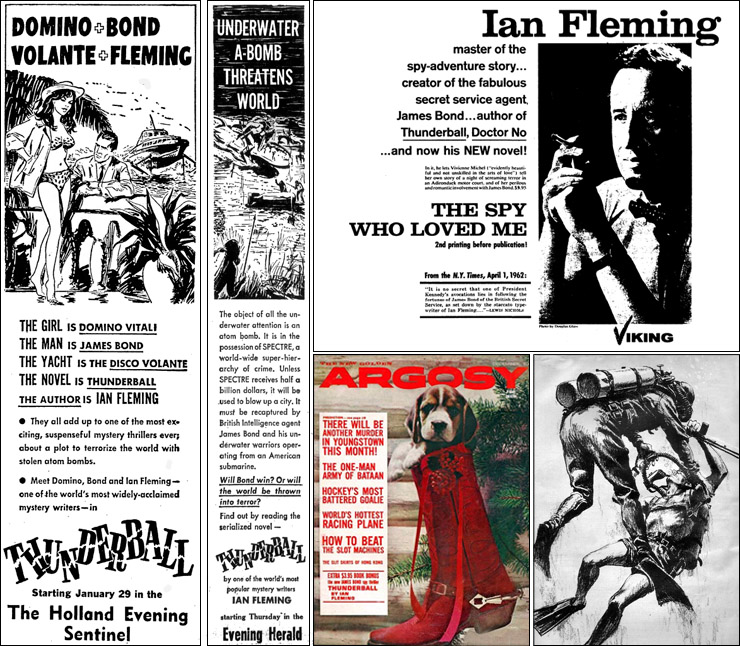 |
|||||
|
Ian Fleming's ninth full-length novel THE SPY WHO LOVED ME (told in first-person narrative by Vivienne Michel) was published on both sides of the Atlantic on April 16, 1962 with the US Viking edition retaining the Richard Chopping artwork seen on its UK Jonathan Cape counterpart. However the title of the book now appears in a bolder black felt pen instead of the pencil text seen on the UK dust jacket, and Ian Fleming's name in full on the cover the in the customary ‘Tea-Chest’ typeface. Originally the novel was to have been issued in February of 1962 in the USA, but Ian Fleming's UK publisher threatened to withhold the Richard Chopping artwork and illustration of the ‘Dreamy Pines Motor Court’ unless Viking released their copy on the same day as in the UK. Viking relented, and although pre-sales had been enough to warrant a further printing before publication, this turned out to be the last Ian Fleming novel they handled. The US edition also includes a preface which did not appear in the UK version, in which the author states he came across the manuscript of the book on his desk one day, and with a little rewriting submitted it to his publishers. The last-minute addition did little to help the reception of the novel which received mixed reviews. Ian Fleming's harshest critic Anthony Boucher of the New York Times did little to help the authors’ reputation in America:
|
|||||
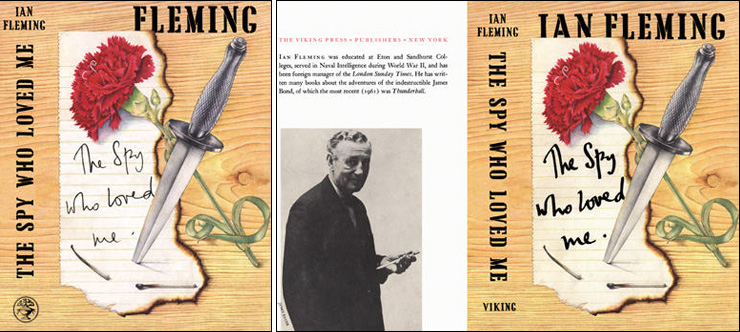 |
|||||
|
Disappointed by the reception of his latest novel, Ian Fleming admitted than it was an experiment had gone very much awry, and begged his British publisher Jonathan Cape that there be no further reprints or a paperback edition of THE SPY WHO LOVED ME. An agreement was reached so that any printings (including the Book Club edition) already ordered would go ahead, but the paperback version would be shelved. It was not until after Fleming's death that a paperback edition was issued in the UK, some five years after its original publication. Following the disagreements over the US publication of THE SPY WHO LOVED ME, Ian Fleming then switched to the New American Library for the hardback editions of his James Bond novels. The publisher then added THUNDERBALL to their existing series of Signet paperbacks in May 1962, now with uniformly designed covers by Barye Phillips, which had now boosted sales to well over 2.5-million copies. Signet also revised their paperback of DOCTOR NO to tie-in with the first James Bond film released in the USA in May of 1963. Retaining the original Barye Phillips vignette; but adding an overprinted flash to the cover and a film still on the back. The book sold well and was soon joined by the first American paperback edition of THE SPY WHO LOVED ME. |
|||||
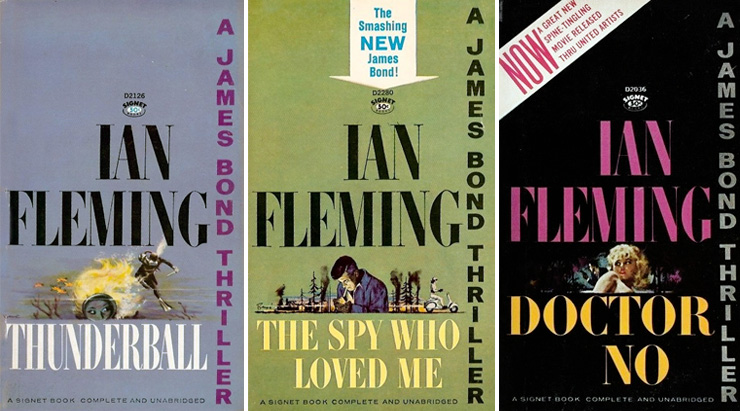 |
|||||
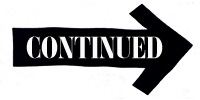 |
|||||